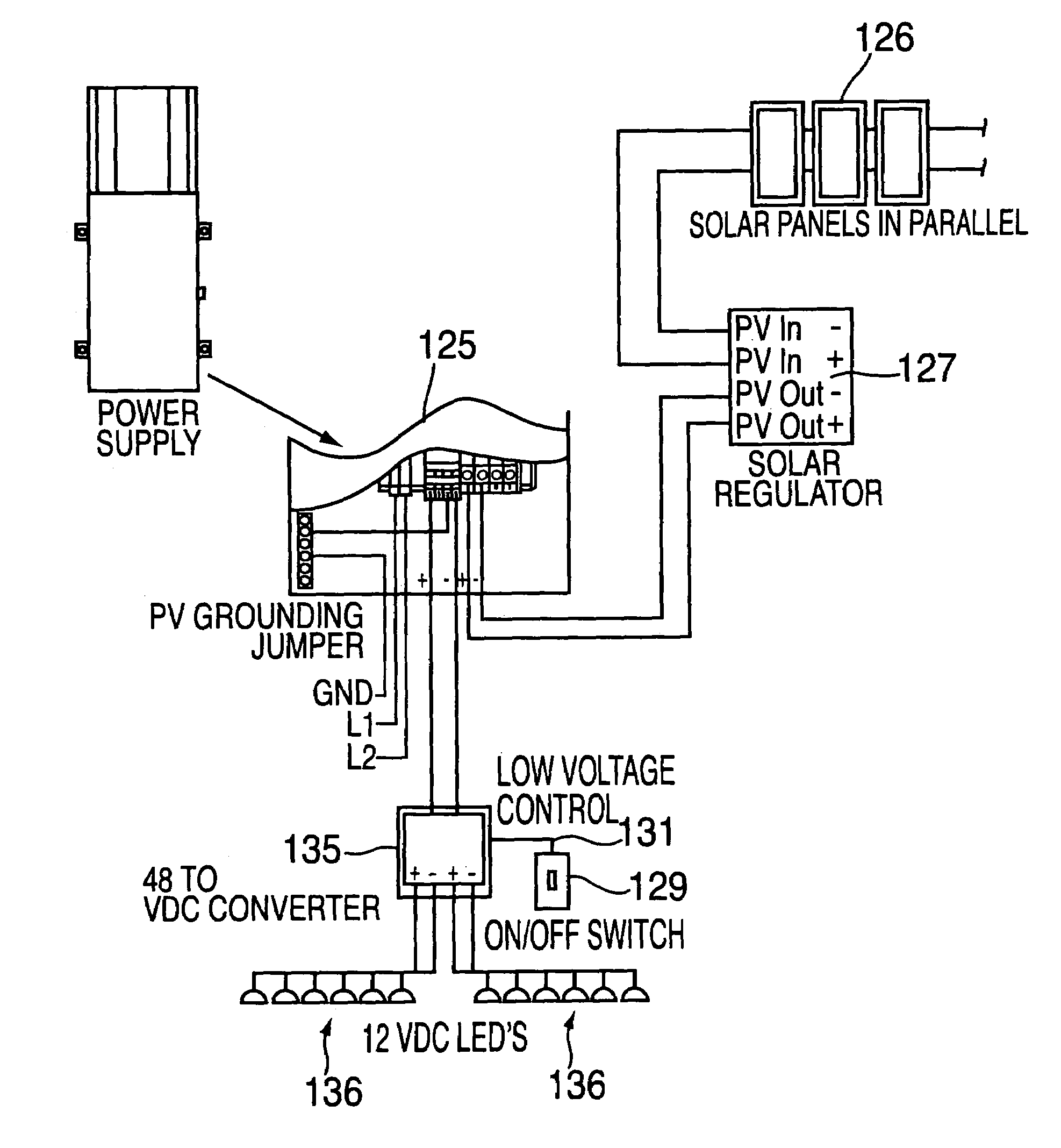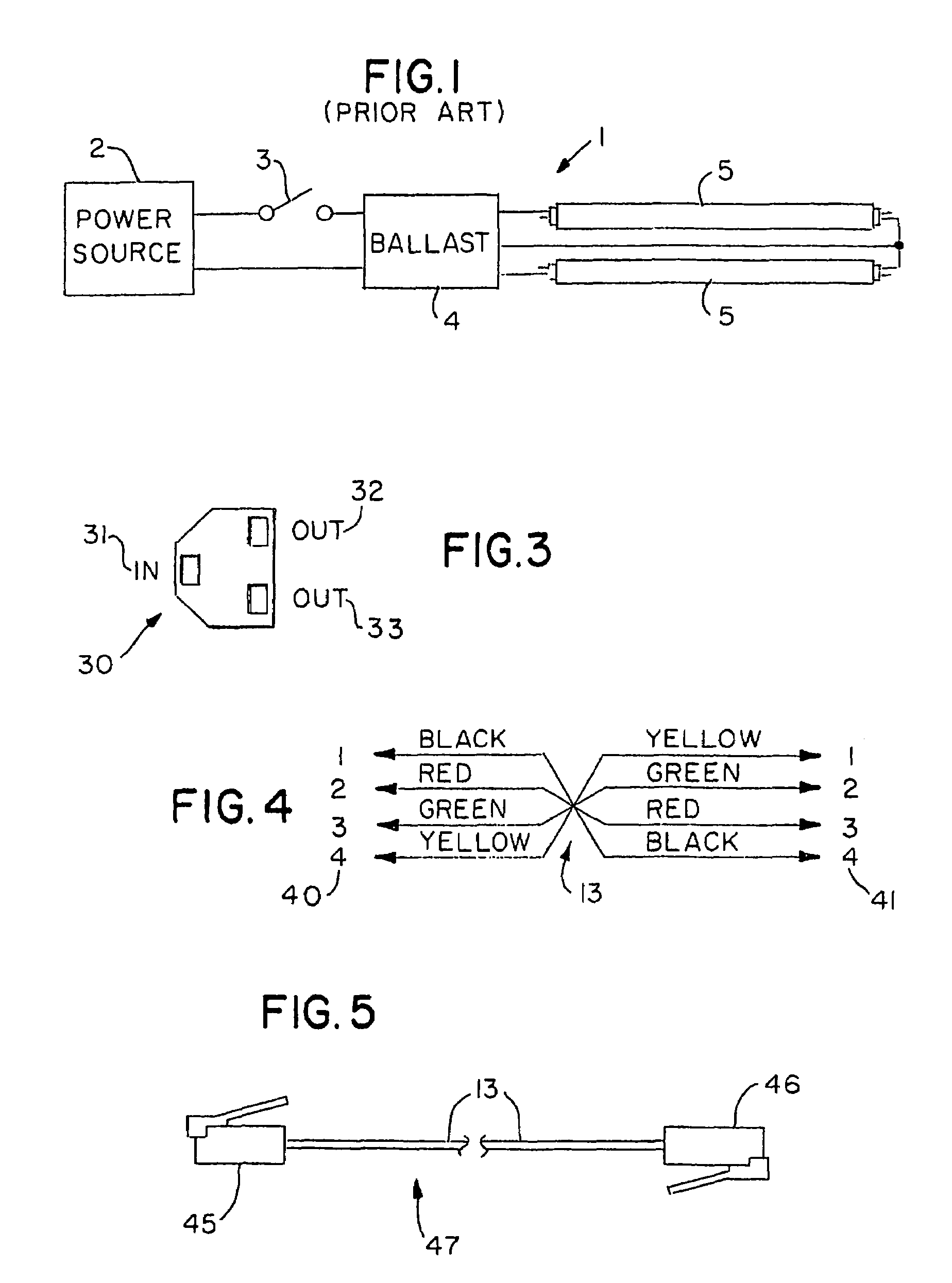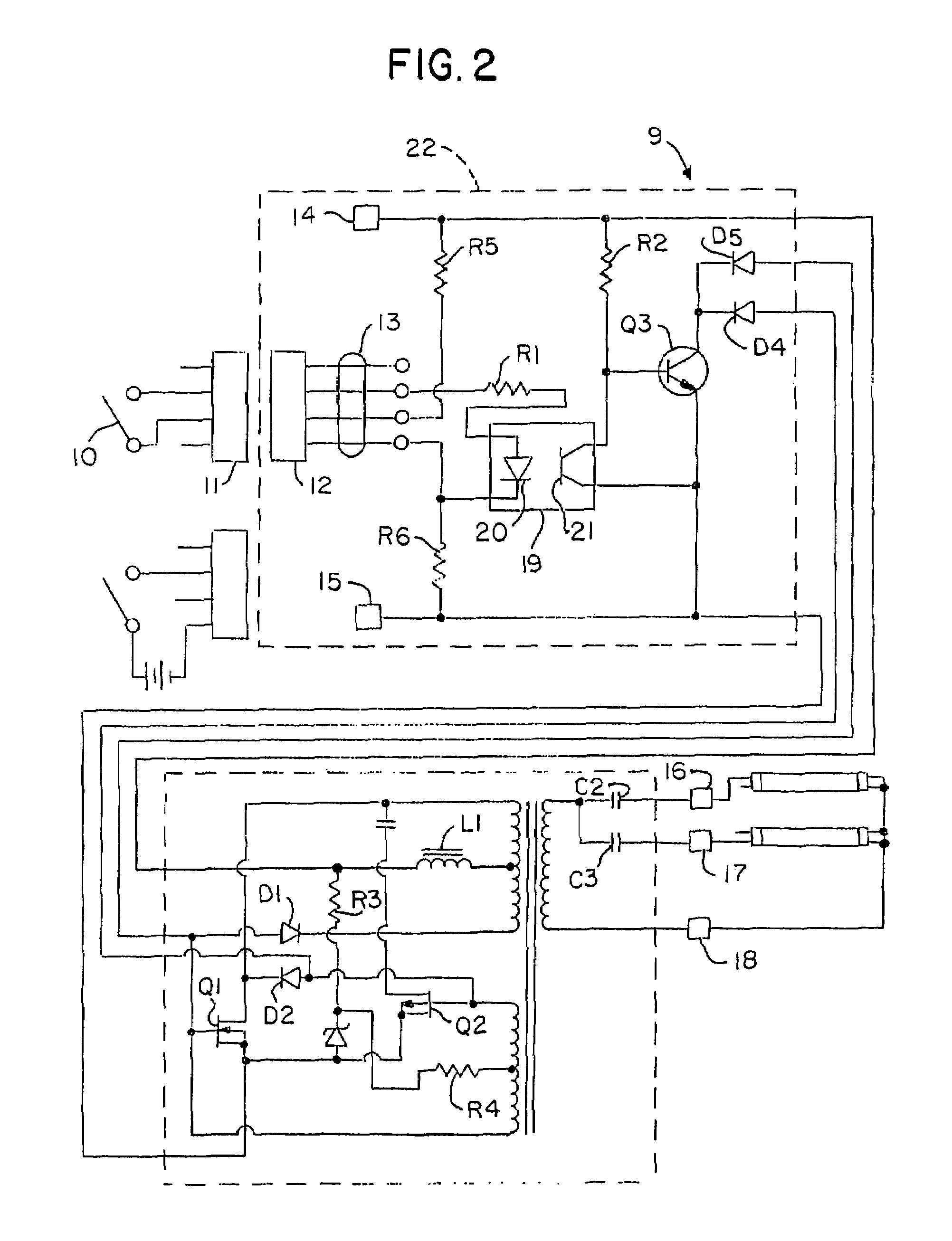Remote control of lighting
a remote control and lighting technology, applied in the field of remote control of lighting, can solve the problems of increasing cost, increasing the number of limitations of this common means of on/off control, and increasing the complexity of the power switching arrangemen
- Summary
- Abstract
- Description
- Claims
- Application Information
AI Technical Summary
Benefits of technology
Problems solved by technology
Method used
Image
Examples
Embodiment Construction
[0041]A block diagram of a prior art lighting circuit 1 is shown in Figure I. A power source 2 is used to power ballast 4 which operates two gas discharge (fluorescent) lamps 5. On / off control of the lamps is influenced by mechanical switch 3 which must be rated for the full supply voltage and current requirements of the lamp load, when multiple ballasts are used in parallel. A long distance from switch 3 to ballast 4 requires evaluation of the effects of the consequent voltage drop. In most jurisdictions, the initial switch wiring as well as any alterations is legally performed only by a licensed electrician.
[0042]FIG. 2 is a schematic diagram of an electronic ballast 9 of this invention. A control switch 10 is wired to connector 11. A cable (not shown) connects connector 11 to connector 12; this could be a long distance. A length of flat 4-conductor telephone or any corresponding signal type cable 13 goes from connector 12 to connections within ballast 9. Terminals 14 and 15 suppl...
PUM
 Login to View More
Login to View More Abstract
Description
Claims
Application Information
 Login to View More
Login to View More - R&D
- Intellectual Property
- Life Sciences
- Materials
- Tech Scout
- Unparalleled Data Quality
- Higher Quality Content
- 60% Fewer Hallucinations
Browse by: Latest US Patents, China's latest patents, Technical Efficacy Thesaurus, Application Domain, Technology Topic, Popular Technical Reports.
© 2025 PatSnap. All rights reserved.Legal|Privacy policy|Modern Slavery Act Transparency Statement|Sitemap|About US| Contact US: help@patsnap.com



